Patio paving completed in Lucan.
Get in touch for your free quote!
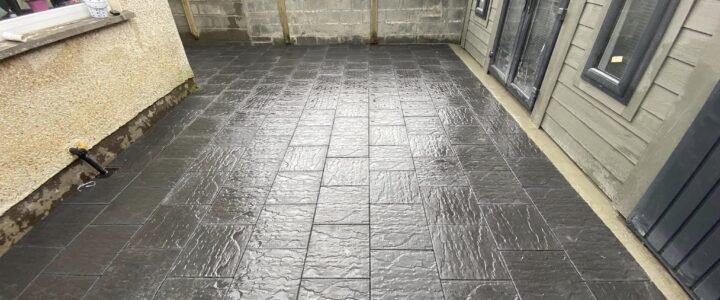
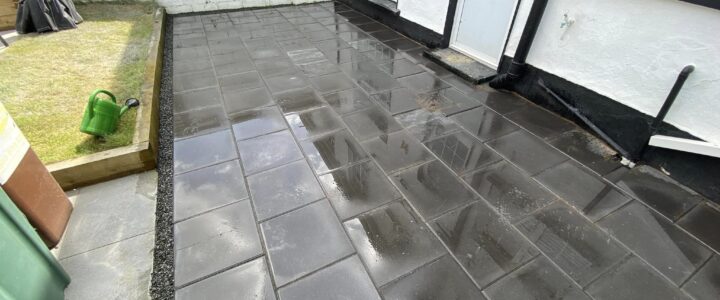
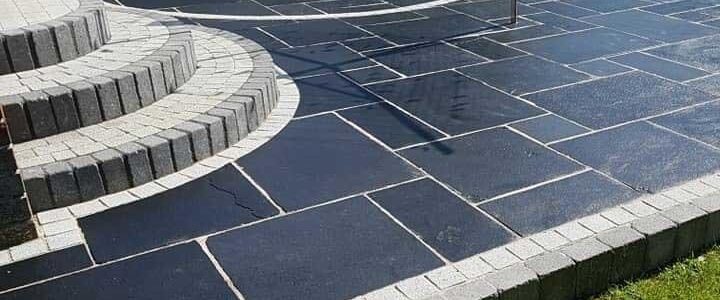
If you have a garden or outdoor space, you may be considering the option of paving it. This can be a great way to increase its usability and make it more attractive. There are many different options available when it comes to patio paving and the materials that would be used. So how do you choose? We’re going to take a look at some of the most popular types of paving in Ireland and how they can be used on patios.
In Ireland, there are many different materials that you can use for patios. The most common are concrete, brick, stone and marble. Granite is also popular with homeowners looking for a long-lasting driveway or pathway in their garden. Slate is another popular choice as it comes in many different colours and patterns and looks great underfoot when used as paving stones. Terracotta and pavers round out the list of popular patio paving materials in Ireland.
Bricks are a traditional material used throughout Ireland in everything from walls to driveways to patios. Cobblestones were also used extensively during this time period but have now become rarer due to modern construction methods. Today, builders prefer using cement or asphalt instead of stone blocks.
Patio paving ideas are a great way to add appeal, ambience and value to your home. Here are some of the most popular ways people in Ireland use patio paving:
According to experts, there are things to keep in mind when choosing materials for you patio paving:
Is it a small area at the side of your house, or a large area that encompasses the entire back yard? A smaller patio will obviously cost less than a larger one, but if you have more space available to work with, there are more options available to you.
Is it square, rectangular, or perhaps circular? This choice will affect which type and brand of paving slabs are best suited for your needs. For example, if you want to create an outdoor living room space where people can relax in comfort on large cushions then you would need larger-sized slabs that would be able to support these added weights without sinking into them too much. However, if children may be playing on it regularly then we recommend using smaller sized stone products instead because they’re safer!
Patio paving is a popular choice for people looking to transform their garden into an outdoor living space. The cost of patio paving depends on various factors, including:
Material costs – granite, limestone and other natural stones are some of the most popular materials for patios. Keep in mind that natural stones, bricks, and stamped concrete are more expensive than gravel and plain concrete.
Labour charges – these vary depending on how much work needs to be done. It’s pricier to have an elaborate patterned design compared to something that looks neat but simple.
If you’re ready to look into your patio paving options, our team of experts can answer your queries and concerns. Call us at (01) 4851582 | 0852139591 or click here to contact us today!

Patio slabs can become stained, mouldy, and form algae over time, especially if you live in rainy places. If you want to keep these at bay, it is essential to clean patio slabs in the summer. This will allow you to enjoy the natural colours of your slabs when relaxing in the sun or cooking family BBQ’s.
It is generally recommended that you clean your patio slabs a few times a year, but a small amount of maintenance regularly is essential. If you’re trying to learn how to clean patio slabs this summer, you should go through this guide.
If you don’t have bleach, you can clean your patio slabs by following these steps:
When you clean your patio slabs, you should ensure that you also keep the joints clean and in good condition. You also need to fill any gaps in the joints.
If you have a pressure washer, the cleaning process will be a lot easier as you will only need to spray the detergent mixture on the patio. You will then have to let it sit for about ten minutes so that it gets into the cracks. After that, you should use the pressure washer to sweep the surface.
Cleaning the patio slabs with bleach generally provides better results compared to using soapy water. This is because bleach gets into all the small spaces on the patio. This way, it can get rid of weeds and other plants growing on the patio.
Since this chemical can kill plant life, you should ensure that it doesn’t flow into the same area as your plants. Also, remember that bleach doesn’t work well with man-made slabs as it can make them fade over time. You should only use the chemical if your patio slabs are made of natural materials.
When cleaning your patio slabs with bleach, you should follow these steps:
It is essential to clean your patio slabs. You can do this using bleach, a pressure washer, or a regular brush and soap water. By keeping the surface clean, you will be able to lengthen its life and can prevent weeds from growing. A new patio connected to your garden can complement wooden floors well when installed by professionals.
Do you need a new patio for your summer garden? Are you thinking of replacing it entirely? Contact us today on 0852139591 or request a quote on this page.
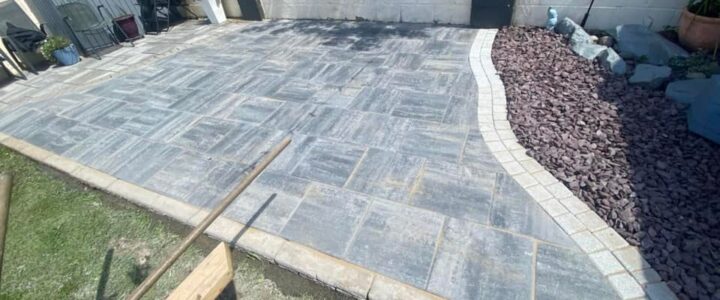
Patio area completed. New Style Driveways is one of the best contractors in Ireland. Get in touch for a free quote
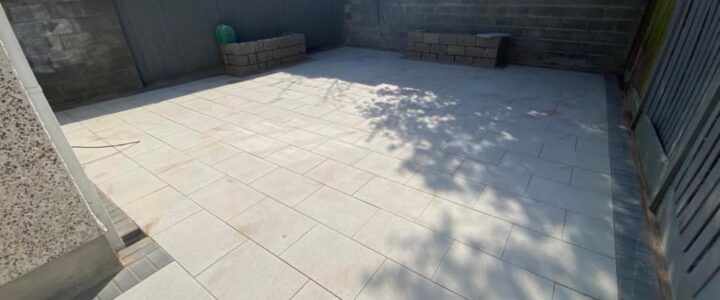
New silver granite patio completed. Contact Us for a free quote.
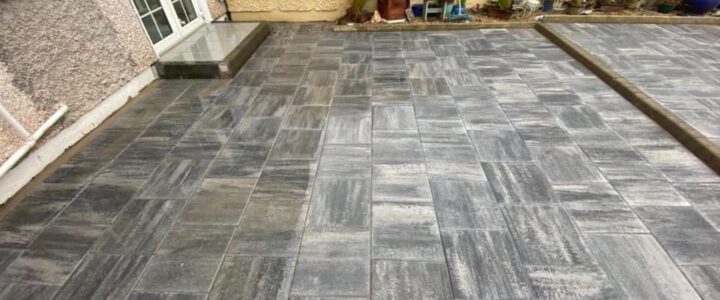
New back garden completed in clondalkin,we took up the old paving and replaced it with silver grey slabs with the proper base and materials. Contact Us for a free quote
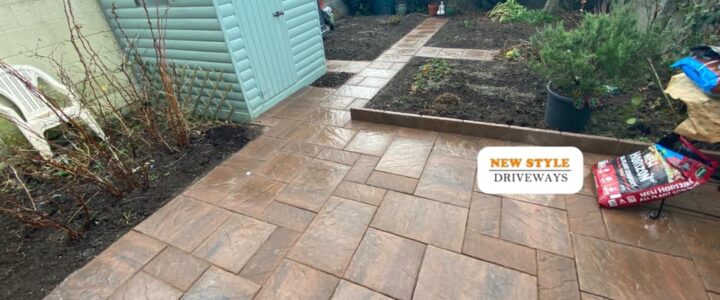
Paving patio recently completed by our team in Lucan pm for a free quote
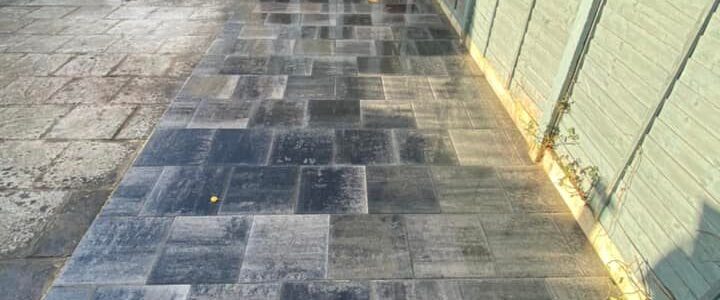
Paving patio completed in Dublin this week also
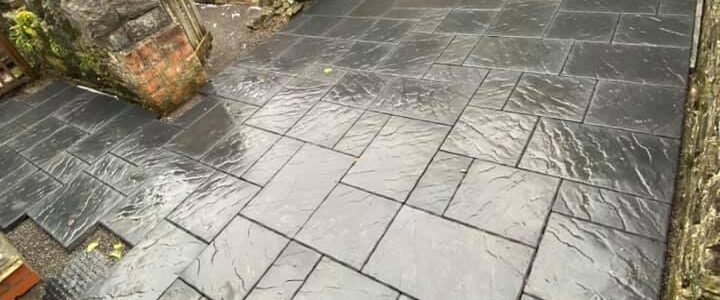
Some before during and afters of a new patio we did take a look and PM us for a free quote.